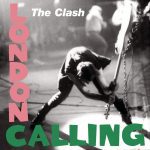
On September 30, 2024, Dr. Tara López, Assistant Professor of Ethnic Studies at Winona State University, presented her new book, Chuco Punk: Sonic Insurgency in El Paso, at the Institute for Historical Studies. Part of The University of Texas Press’ American Music Series, the book traces El Paso’s influential Chicanx punk rock scene from its evolution in the 1970s through the early 2000s. López uses ‘Chuco punk’ as a lens to explore broader political, social, and cultural forces in the borderlands.[1] In doing so, she reveals how this music scene reflected a longer history of cultural and musical resistance among El Paso’s predominantly Chicanx community.
Chuco Punk is deeply embedded in the cultural and geographical specificity of El Paso, a city marked by the realities of militarization and segregation along the U.S.-Mexico border. “Dr. López’s work is impressively propulsive—weaving her expertise as a sociologist, a musicologist, and a transnational historian,” praises Dr. Annette Rodriguez, Assistant Professor of History at UT-Austin. “She elevates late-20th century El Paso, Texas, and Ciudad Juárez to their proper historical significance by documenting this long insurgent sonic landscape.” As Dr. Rodriguez notes, López explores how El Paso’s punk music scene created an outlet for marginalized voices while also responding to the wider social and political environment.

Punks in El Paso found ways to create their own space, sound, and community outside mainstream venues by staging shows in backyards and mechanic shops. The DIY and underground spirit of the scene often garnered dismissive attitudes. Bobby Welch, a concert promoter interviewed by López, recalled feeling that many people dismissed punk musicians as “stupid people who [couldn’t] play two chords.” However, Chuco Punk upends that narrative, showing that these El Paso artists forged a platform to vent frustrations and express solidarity while also pushing back against broader social expectations. By taking these musicians seriously, López emphasized that punk music in El Paso was more than just a rebellious subculture. The genre was also a form of political memory and protest.
López’s research draws on over seventy interviews with punks as well as unarchived materials, such as flyers, zines, photographs, and other ephemera. For the punks of El Paso, personal collections became informal archives. They carefully preserved their own history, which challenges the conventional narrative that punk music is predominately white and male. López’s work resists this framing. Instead, she illustrates how Chicanx women, in particular, carved out their own space within the punk scene.
Alongside these unarchived materials, oral histories serve as the backbone of López’s historical research. However, she initially faced some hesitation within the punk community, whose members were wary of academics seeking to document their story. This skepticism—rooted in the sense that punk itself was never taken seriously by mainstream culture—eventually gave way to rich collaboration. In gaining the punk community’s trust, López is able to elevate marginalized voices and materials by drawing on their rich, informal archives.
Ultimately, López offers more than a history of punk music in El Paso. She also challenges scholars to rethink their assumptions about what sources, archives, and communities are worthy of academic study. In her presentation, she recounted stories of fellow scholars who framed her research as “fun” or “a hobby.” Pushing back, she argued that these attitudes marginalize important narratives and constrain academic scholarship. The power of centering communities at the periphery became apparent during the talk’s question and answer session. Multiple attendees, themselves from El Paso, became emotional as they thanked López for telling the story of their community. Their reactions demonstrate the project’s ability to awaken and animate historical memory. Chuco Punk thus opens new possibilities for how we think about archives, memory, and the role of subcultures in shaping broader historical narratives.
Gabrielle Esparza is a Ph.D. candidate in Latin American history, with a focus on twentieth-century Argentina. Her dissertation examines the evolution of President Raúl Alfonsín’s human rights policies from his candidacy to his presidency in post-dictatorship Argentina. At the University of Texas at Austin, Gabrielle has served as a graduate research assistant at the Texas State Historical Association and as co-coordinator of the Symposium on Gender, History, and Sexuality in 2020-2021. Gabrielle was also Associate Editor and Communications Director of Not Even Past from 2021-2022. Currently, Gabrielle works as a graduate research assistant in the Institute for Historical Studies and as an Editorial Assistant for The Americas: A Quarterly Review of Latin American History.
The views and opinions expressed in this article or video are those of the individual author(s) or presenter(s) and do not necessarily reflect the policy or views of the editors at Not Even Past, the UT Department of History, the University of Texas at Austin, or the UT System Board of Regents. Not Even Past is an online public history magazine rather than a peer-reviewed academic journal. While we make efforts to ensure that factual information in articles was obtained from reliable sources, Not Even Past is not responsible for any errors or omissions.
[1] El Chuco is a common nickname for El Paso. Scholars attribute the term’s origins to the pachuco subculture that originated in El Paso in the 1920s. Pachucos were particularly well-known for their jargon and style, which included ‘zoot suits.’ See Dictionary of Chicano Folklore (2000)by Rafaela G. Castro for more on this term.



